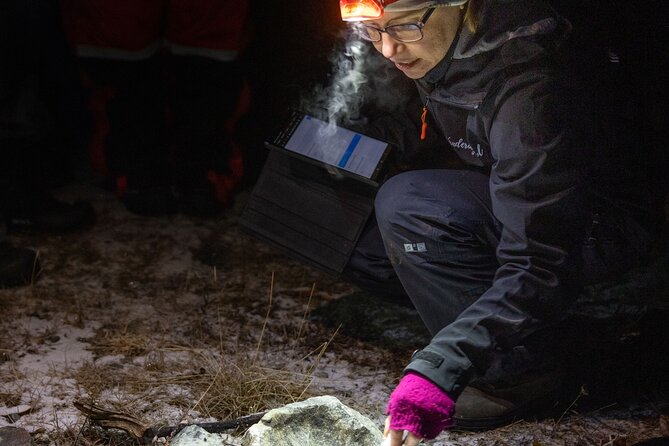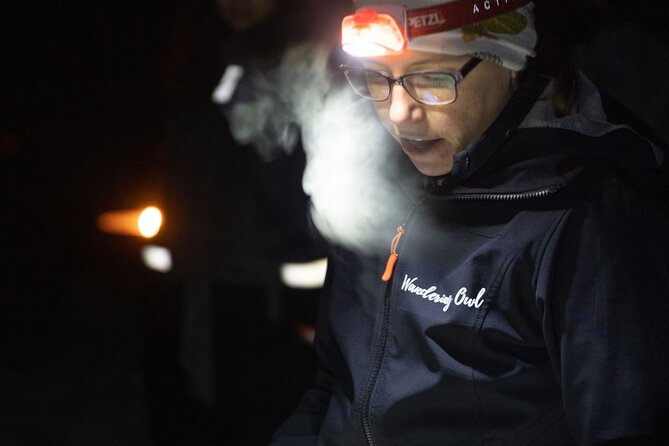In the vast expanse of the tundra, where the frigid winds whip across the desolate landscape, lies a hidden world of intricate beauty and resilience. However, this delicate ecosystem is under threat, its once-pristine surface scarred by human activities.
The damage inflicted upon the tundra may seem irreparable, but there is hope. Through the combined efforts of scientists, conservationists, and local communities, mapping and restoring the tundra damage has become a mission of utmost importance.
As we venture into this captivating journey, we will uncover the challenges faced, the innovative techniques employed, and the enduring spirit that fuels the quest to protect this vital environment.
So, step into the tundra’s frozen realm, where the fate of an entire ecosystem hangs in the balance.
Good To Know

- Tundra ecosystems are facing environmental damage due to rising temperatures and climate change, leading to the loss of habitat for species like polar bears and caribou.
- Regular monitoring, remote sensing techniques, and on-ground surveys are crucial for assessing the extent and severity of tundra damage caused by climate change.
- Mapping tundra disturbances using remote sensing data helps identify areas impacted by environmental damage and provides detailed information on changes in vegetation cover, species composition, and ecosystem health.
- Restoring tundra habitats involves managing invasive species, planting native vegetation, engaging local communities in planning and implementation, and regular monitoring of restored areas for adjustments and improvements.
Understanding Tundra Ecosystems

Have you ever wondered what makes tundra ecosystems unique and how they thrive in such harsh conditions? Tundra regions are characterized by their extremely cold temperatures, low precipitation, and short growing seasons. Despite these challenging conditions, tundra ecosystems have evolved to support a variety of plant and animal species.
However, the effects of climate change on tundra are becoming increasingly concerning. Rising temperatures are causing permafrost to thaw, which disrupts the delicate balance of the ecosystem. This has led to the loss of habitat for many species, such as the polar bear and caribou.
Indigenous communities have long relied on their traditional knowledge to conserve and sustainably manage tundra ecosystems. Their understanding of the land, its resources, and the interconnectedness of all living beings has been invaluable in the conservation efforts.
Find more activities and experiences we've covered in Tromso.
Assessing Environmental Damage

As we venture deeper into the exploration of tundra ecosystems, our focus now shifts towards the crucial task of assessing the environmental damage caused by climate change. This assessment is essential in understanding the extent of the impacts and developing effective mitigation strategies.
Here are four key aspects of evaluating the impacts and implementing mitigation strategies for tundra damage:
Monitoring: Regular monitoring is necessary to identify changes in the tundra environment and track the progression of damage. This includes measuring temperature fluctuations, permafrost thaw, and vegetation changes.
Remote Sensing: Utilizing satellite imagery and remote sensing techniques can provide valuable information about the spatial extent and severity of tundra damage. This allows for a comprehensive understanding of the affected areas.
Field Surveys: Conducting on-ground surveys is crucial for gathering detailed data on the impacts of climate change in the tundra. This includes assessing changes in species composition, soil conditions, and overall ecosystem health.
Modeling: Developing models that simulate various climate scenarios can help predict future damage and evaluate the effectiveness of different mitigation strategies. These models enable researchers to make informed decisions and prioritize restoration efforts.
Mapping Tundra Disturbances
Mapping tundra disturbances allows us to visually identify and understand the areas that have been impacted by environmental damage in these delicate ecosystems. By examining the changes in tundra vegetation, scientists can gain valuable insights into the extent and severity of the disturbances.
Remote sensing techniques, such as satellite imagery and aerial surveys, play a crucial role in this process. These technologies provide a bird’s-eye view of the tundra, allowing researchers to detect and map changes in vegetation cover, species composition, and overall ecosystem health.
With the help of advanced software and algorithms, scientists can analyze the data obtained through remote sensing to create detailed maps that highlight the areas most affected by disturbances. This information is vital for conservation efforts and restoration initiatives in the tundra, enabling targeted interventions to protect and restore these fragile ecosystems.
Restoring Tundra Habitats
Restoring tundra habitats is a challenging yet crucial endeavor in preserving the delicate ecosystem of these pristine Arctic landscapes. To effectively restore these habitats, it’s important to manage invasive species and involve the local community. Here are four key aspects to consider:
Identifying and controlling invasive species: Invasive plants and animals can disrupt the balance of the tundra ecosystem. By identifying and implementing strategies to control these species, the natural habitat can be restored.
Restoring vegetation: Planting native vegetation helps to stabilize the soil, prevent erosion, and provide food and shelter for native wildlife. Restoration efforts should focus on reintroducing native plant species that are well adapted to the tundra environment.
Engaging the community: Local communities play a crucial role in the restoration process. Involving them in planning and implementation can foster a sense of ownership and responsibility towards the tundra habitats.
Monitoring and adaptive management: Regular monitoring of restored areas allows for adjustments and improvements to be made. This ensures that restoration efforts are effective and sustainable in the long term.
Long-term Solutions for Tundra Conservation
To ensure the long-term conservation of tundra habitats, a proactive approach must be taken that goes beyond restoration efforts and involves sustainable practices that engage local communities and promote the preservation of this unique Arctic ecosystem.
Ecosystem restoration is a crucial part of tundra conservation, but it’s equally important to engage with the local communities who rely on these habitats for their livelihoods. By involving the communities in conservation efforts, their knowledge and experiences can contribute to more effective and sustainable practices.
This can be achieved through educational programs, community-led initiatives, and partnerships with local businesses. Community engagement not only fosters a sense of ownership and pride in the tundra, but also ensures that conservation efforts are supported and maintained in the long run.
Common Questions
How Long Does It Take for Tundra Habitats to Fully Recover After Environmental Damage?
Tundra habitats can take several decades to fully recover after environmental damage, depending on the severity. Restoration techniques, such as reseeding and soil stabilization, can help expedite the recovery process and promote the return of native flora and fauna.
What Are the Main Factors That Contribute to Tundra Disturbances?
Tundra disturbances can result from various factors, including climate change impacts. These disturbances can disrupt the delicate balance of the ecosystem, affecting vegetation, permafrost, and wildlife. Understanding and mitigating these impacts is crucial for preserving the tundra’s unique and fragile environment.
Are There Any Specific Techniques or Methods Used for Mapping Tundra Disturbances?
Mapping techniques, such as remote sensing, are used to identify and assess tundra disturbances. These methods allow researchers to gather valuable information about the extent and severity of damage, aiding in the restoration efforts of these fragile ecosystems.
What Are Some of the Challenges Faced When Restoring Tundra Habitats?
Challenges faced when restoring tundra habitats include extreme weather conditions, limited accessibility, and slow recovery rates. Restoration techniques involve planting native vegetation, controlling erosion, and reintroducing keystone species to promote ecosystem resilience.
Are There Any Long-Term Monitoring Programs in Place to Ensure the Success of Tundra Conservation Efforts?
Yes, there are long-term monitoring programs in place to ensure the success of tundra conservation efforts. These programs track changes in vegetation, wildlife populations, and climate conditions, helping to inform conservation strategies and measure the effectiveness of restoration efforts.
The Sum Up
To sum it up, mapping and restoring tundra damage is crucial for the preservation of this delicate ecosystem.
By understanding the extent of environmental damage and using innovative mapping techniques, we can identify areas in need of restoration.
Through active restoration strategies, we can promote the recovery of tundra habitats and ensure their long-term conservation.
It’s through our collective efforts that we can protect and preserve the unique and adventurous world of the tundra for generations to come.
More Tour Reviews in Tromso
Looking for something different? Other Tromso activities we've written about
- 4 Hour Aurora Tour Photos Snacks and Warm Drinks Included
- Tromsø Fjords Tour of Kvaloya and Sommaroy
- Tromsø: Express Aurora Hunt with Wandering Owl
- Explore Tromso in 60 minutes with a Local
- Northern Lights Safari Tromso
- Private Dogsledding tour with a Night at our little Husky lodge
- Tromsø: Arctic Fjord Floating
- Small Northern Lights Tour Max8 Guests PRO Photographer included
- Small Group 4×4 Van Journey in Search of the Northern Lights
- From Tromsø: OFFICIAL Northern Lights Safari
- Tromso Experience Vannoya Island Wild Remote and Real
- Tromsø: Polar Fjord & Fishing Cruise with Lunch included
